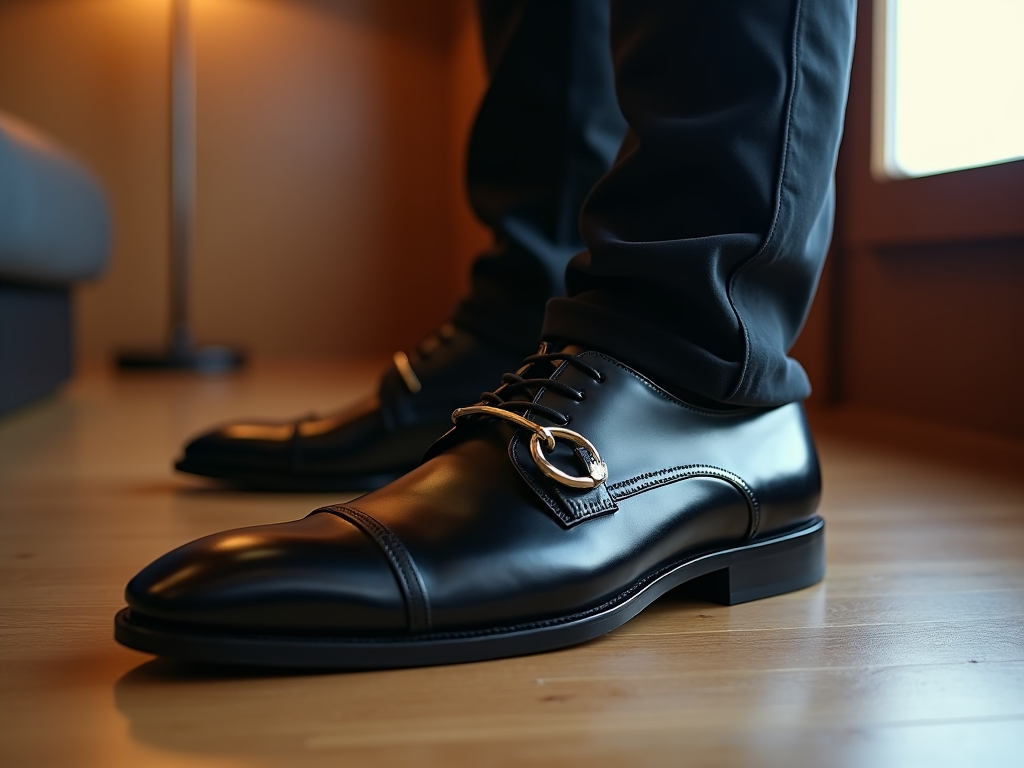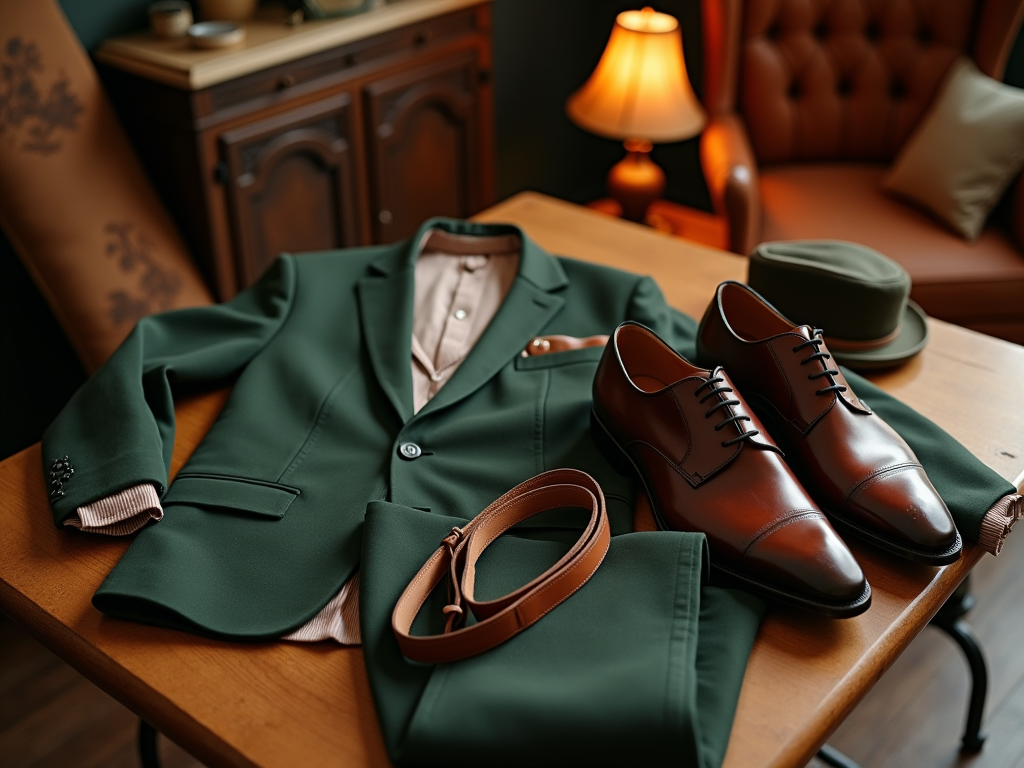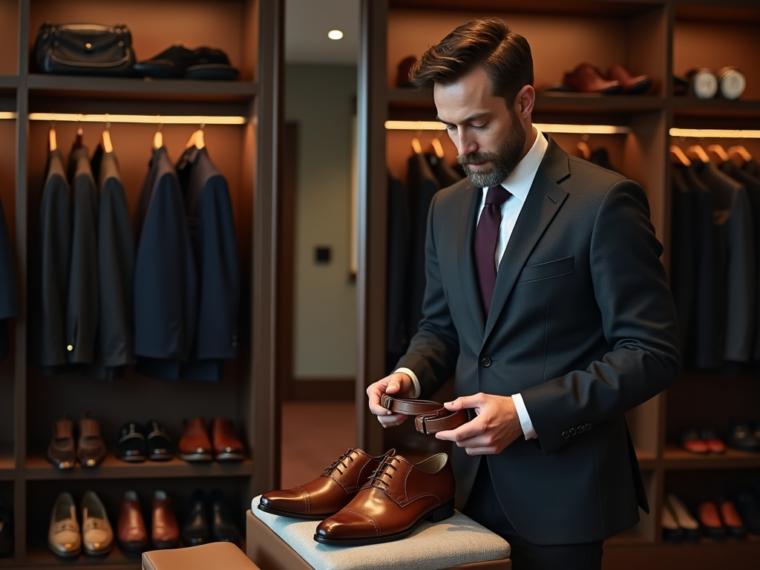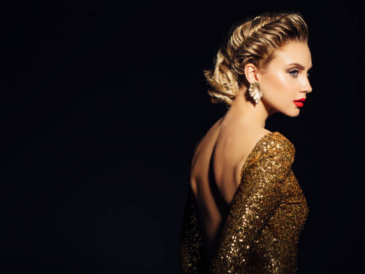Matching your dress shoes and belt is a decision steeped in the nuanced world of fashion etiquette. This conundrum holds substantial weight in crafting your overall look, primarily if you’re dressing for formal settings. While some might argue that coordinated attire showcases sophistication, others might deem it a fashion myth. This article delves into the intricacies of matching belts and dress shoes, guiding you through a decision that aligns with your personal style and the occasion.
The Importance of Consistency in Formal Attire

Consistency in your attire, particularly for formal events, plays a critical role in presenting a polished appearance. When your dress shoes and belt align, it suggests an attention to detail that enhances your professional image. For most formal occasions, matching your leather belt with your shoes is an unwritten rule in the sartorial world. A black belt typically pairs with black shoes, while brown shoes call for a belt in a similar brown tone. This consistency ensures your ensemble appears cohesive rather than disjointed.
Exploring the Power of Color Coordination

Color coordination goes beyond just matching; it involves harmonizing different elements of your outfit to create a seamless look. When deciding on dress shoes and a belt, it’s helpful to consider the shades within the same family. Brown, for instance, offers a spectrum from light tan to deep chocolate, and your choice should reflect a balance, not necessarily identical hues. Moreover, understanding which colors complement your skin tone can elevate your outfit further, making you appear more put together without following rigid color rules.
Aside from color, the texture and material of your shoes and belt significantly influence the matching narrative. Leather is the most common material for both dress belts and shoes. However, within leather, there are distinctions such as patent leather, suede, and nubuck. Each texture creates a different visual effect, and mixing textures can be a bold style statement. For instance, a glossed finish on shoes demands a similarly polished belt, whereas matte or suede shoes can be paired with less glossy belts.
Modern Style Flexibility
In recent years, fashion trends have evolved, bringing more flexibility to traditional dress codes. As modern style becomes more adaptable, the rigid rule of matching shoes and belt sees more relaxed interpretations. Contemporary sartorial advice suggests that while matching remains a safe choice, experimenting with different textures or slightly varying colors can establish a unique and personalized look. This flexibility can be especially beneficial in casual or semi-formal settings where individuality in style is appreciated.
Conclusion
The decision to match your dress shoes and belt boils down to the setting and your personal style. For formal occasions, maintaining a consistent look by matching can reflect professionalism and elegance. Still, feel free to explore textures and adjacent color shades to express individuality, especially in less formal environments. Fashion, after all, is about personal expression, so while guidelines exist, they aren’t absolute rules. Use them as tools to craft the appearance that best represents who you are.
Frequently Asked Questions
1. Can I wear a brown belt with black shoes or vice versa?
Wearing a brown belt with black shoes or vice versa is generally discouraged in formal settings as it can disrupt the visual flow of your attire. However, in casual or creative environments, using contrasting colors might work if done thoughtfully.
2. Are there exceptions to the matching rule?
Yes, exceptions exist, especially in creative and casual environments. For instance, belts with patterns or unique textures can sometimes complement shoes of different colors when styled with other matching accessories.
3. What materials should I consider for belts and shoes?
Leather is the most common and versatile choice for belts and dress shoes. However, materials such as suede, patent, and nubuck can offer varying textures that might add interest to your ensemble.
4. How can I ensure a balanced look if I’m not matching exactly?
Ensure a balanced look by selecting shoes and a belt that are in similar color families and textures. Complement them with accessories or clothing pieces that bring the ensemble together cohesively.
5. How does matching impact professional appearance?
Matching your dress shoes and belt in formal settings can enhance your professional appearance by showcasing attention to detail. It’s a subtle clue to others that you understand and respect formal dress codes.





